二叉树有多种遍历方法,有层次遍历、深度优先遍历、广度优先遍历等。
本文只涉及二叉树的先序、中序、后序的递归和非递归遍历。
涉及到的代码都用Java编写。
首先给出二叉树节点类:
树节点:
class TreeNode {int val;//左子树TreeNode left;//右子树TreeNode right;//构造方法TreeNode(int x) {val = x;}}
无论是哪种遍历方法,考查节点的顺序都是一样的(思考做试卷的时候,人工遍历考查顺序)。只不过有时候考查了节点,将其暂存,需要之后的过程中输出。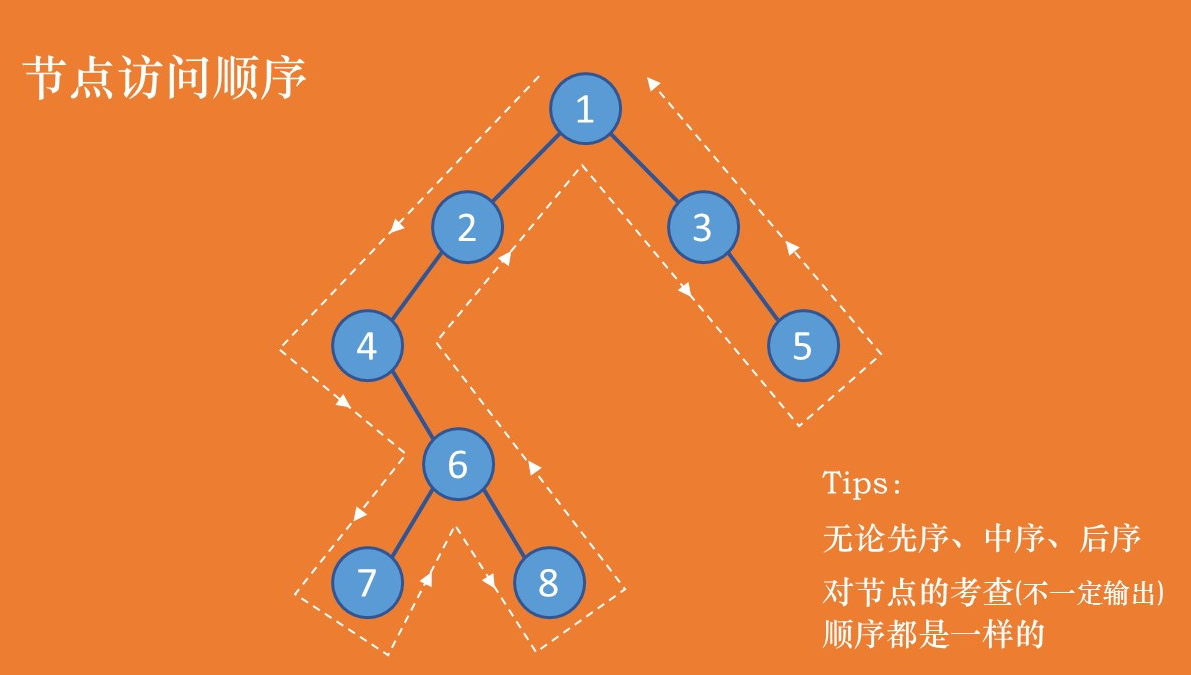
图1:先序、中序、后序遍历节点考查顺序
如图1所示,三种遍历方法(人工)得到的结果分别是:
先序:1 2 4 6 7 8 3 5
中序:4 7 6 8 2 1 3 5
后序:7 8 6 4 2 5 3 1
三种遍历方法的考查顺序一致,得到的结果却不一样,原因在于:
先序:考察到一个节点后,即刻输出该节点的值,并继续遍历其左右子树。(根左右)
中序:考察到一个节点后,将其暂存,遍历完左子树后,再输出该节点的值,然后遍历右子树。(左根右)
后序:考察到一个节点后,将其暂存,遍历完左右子树后,再输出该节点的值。(左右根)
先序遍历
递归先序遍历
递归先序遍历很容易理解,先输出节点的值,再递归遍历左右子树。中序和后序的递归类似,改变根节点输出位置即可。
// 递归先序遍历public static void recursionPreorderTraversal(TreeNode root) {if (root != null) {System.out.print(root.val + " ");recursionPreorderTraversal(root.left);recursionPreorderTraversal(root.right);}}
非递归先序遍历
因为要在遍历完节点的左子树后接着遍历节点的右子树,为了能找到该节点,需要使用栈来进行暂存。中序和后序也都涉及到回溯,所以都需要用到栈。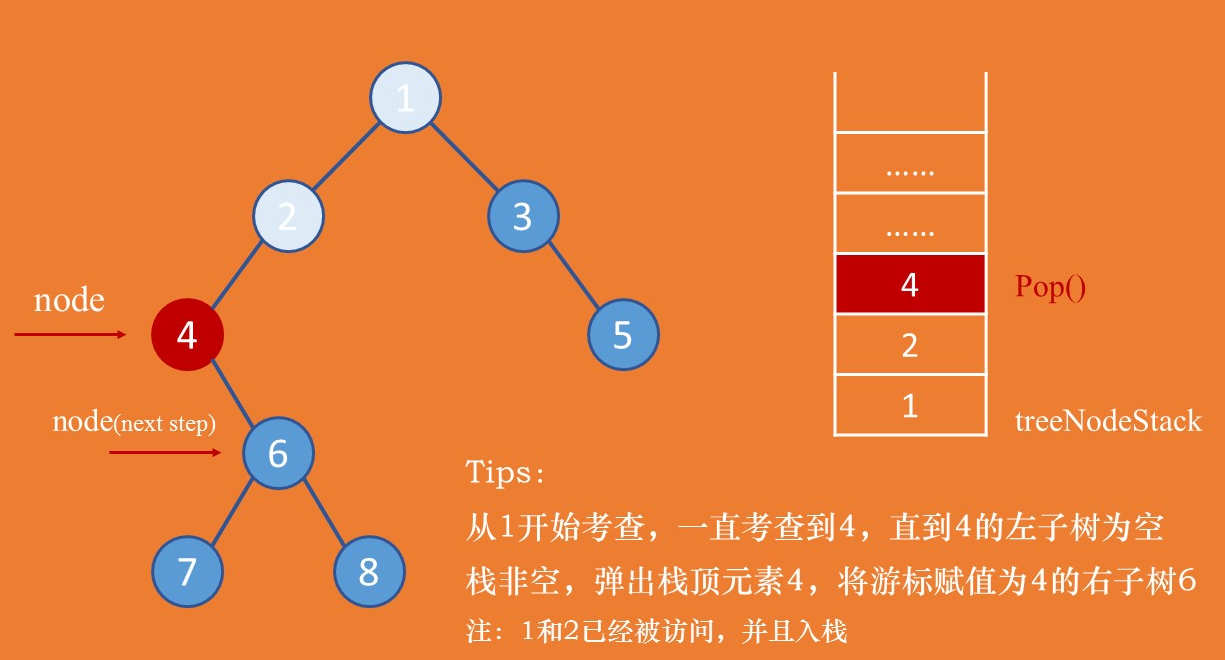
图2:非递归先序遍历
遍历过程参考注释
// 非递归先序遍历public static void preorderTraversal(TreeNode root) {// 用来暂存节点的栈Stack<TreeNode> treeNodeStack = new Stack<TreeNode>();// 新建一个游标节点为根节点TreeNode node = root;// 当遍历到最后一个节点的时候,无论它的左右子树都为空,并且栈也为空// 所以,只要不同时满足这两点,都需要进入循环while (node != null || !treeNodeStack.isEmpty()) {// 若当前考查节点非空,则输出该节点的值// 由考查顺序得知,需要一直往左走while (node != null) {System.out.print(node.val + " ");// 为了之后能找到该节点的右子树,暂存该节点treeNodeStack.push(node);node = node.left;}// 一直到左子树为空,则开始考虑右子树// 如果栈已空,就不需要再考虑// 弹出栈顶元素,将游标等于该节点的右子树if (!treeNodeStack.isEmpty()) {node = treeNodeStack.pop();node = node.right;}}}
先序遍历结果:
递归先序遍历: 1 2 4 6 7 8 3 5
非递归先序遍历:1 2 4 6 7 8 3 5
中序遍历
递归中序遍历
过程和递归先序遍历类似
// 递归中序遍历public static void recursionMiddleorderTraversal(TreeNode root) {if (root != null) {recursionMiddleorderTraversal(root.left);System.out.print(root.val + " ");recursionMiddleorderTraversal(root.right);}}
非递归中序遍历
和非递归先序遍历类似,唯一区别是考查到当前节点时,并不直接输出该节点。
而是当考查节点为空时,从栈中弹出的时候再进行输出(永远先考虑左子树,直到左子树为空才访问根节点)。
// 非递归中序遍历public static void middleorderTraversal(TreeNode root) {Stack<TreeNode> treeNodeStack = new Stack<TreeNode>();TreeNode node = root;while (node != null || !treeNodeStack.isEmpty()) {while (node != null) {treeNodeStack.push(node);node = node.left;}if (!treeNodeStack.isEmpty()) {node = treeNodeStack.pop();System.out.print(node.val + " ");node = node.right;}}}
中序遍历结果
递归中序遍历: 4 7 6 8 2 1 3 5
非递归中序遍历:4 7 6 8 2 1 3 5
后序遍历
递归后序遍历
过程和递归先序遍历类似
// 递归后序遍历public static void recursionPostorderTraversal(TreeNode root) {if (root != null) {recursionPostorderTraversal(root.left);recursionPostorderTraversal(root.right);System.out.print(root.val + " ");}}
非递归后序遍历
后续遍历和先序、中序遍历不太一样。
后序遍历在决定是否可以输出当前节点的值的时候,需要考虑其左右子树是否都已经遍历完成。
所以需要设置一个lastVisit游标。
若lastVisit等于当前考查节点的右子树,表示该节点的左右子树都已经遍历完成,则可以输出当前节点。
并把lastVisit节点设置成当前节点,将当前游标节点node设置为空,下一轮就可以访问栈顶元素。
否者,需要接着考虑右子树,node = node.right。
以下考虑后序遍历中的三种情况: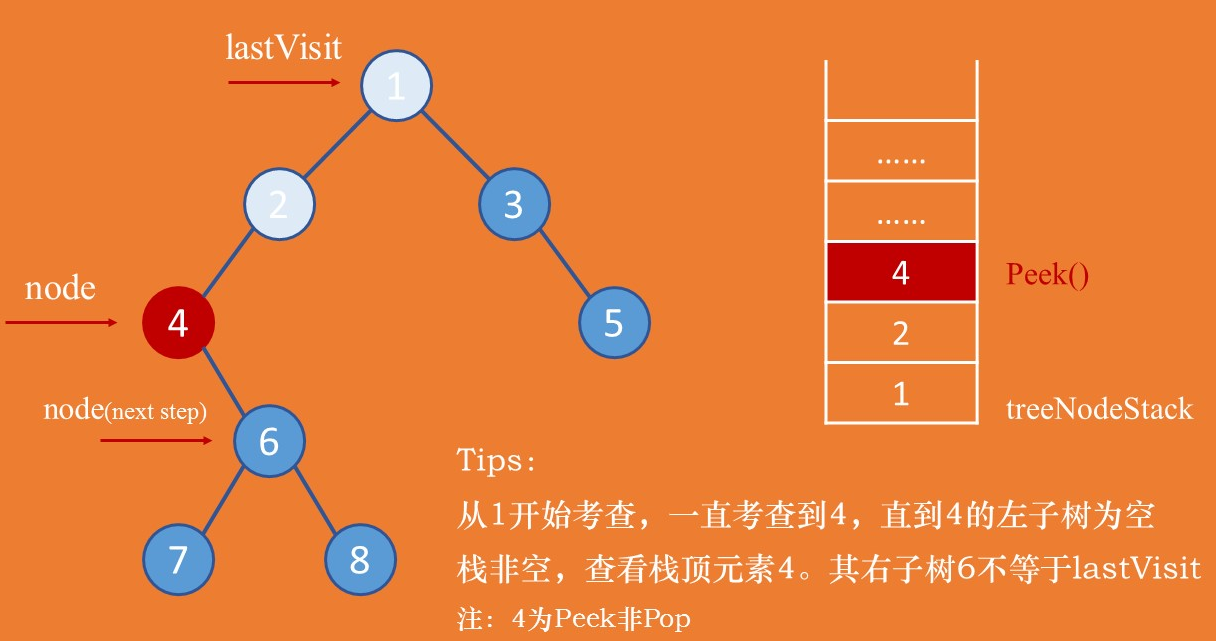 图3:后序,右子树不为空,node = node.right
图3:后序,右子树不为空,node = node.right
如图3所示,从节点1开始考查直到节点4的左子树为空。
注:此时的游标节点node = 4.left == null。
此时需要从栈中查看 Peek()栈顶元素。
发现节点4的右子树非空,需要接着考查右子树,4不能输出,node = node.right。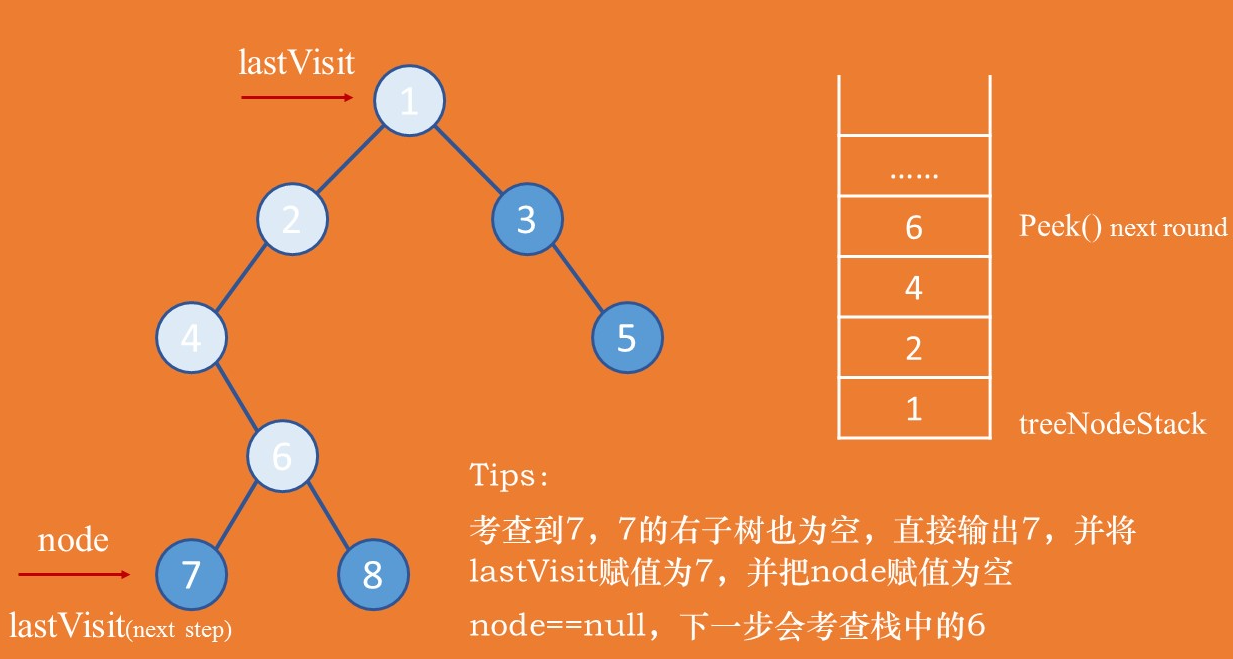
图4:后序,左右子树都为空,直接输出
如图4所示,考查到节点7(7.left == null,7是从栈中弹出),其左右子树都为空,可以直接输出7。
此时需要把lastVisit设置成节点7,并把游标节点node设置成null,下一轮循环的时候会考查栈中的节点6。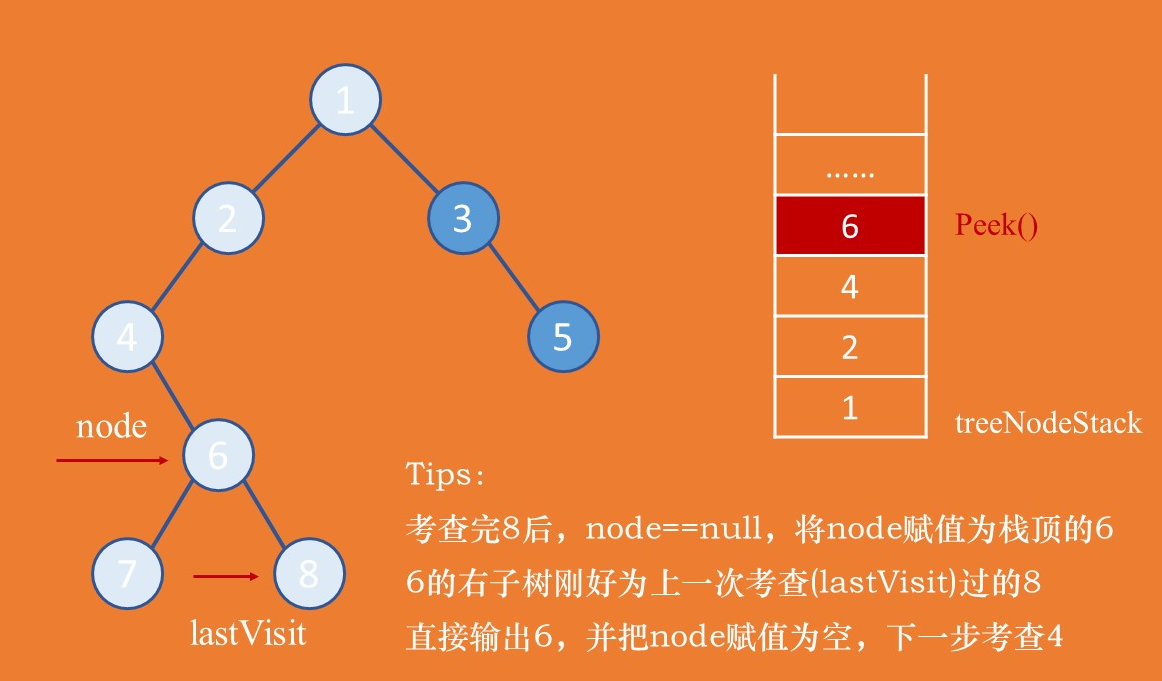
图5:后序,右子树 = lastVisit,直接输出
如图5所示,考查完节点8之后(lastVisit == 节点8),将游标节点node赋值为栈顶元素6,节点6的右子树正好等于节点8。表示节点6的左右子树都已经遍历完成,直接输出6。
此时,可以将节点直接从栈中弹出Pop(),之前用的只是Peek()。
将游标节点node设置成null。
// 非递归后序遍历public static void postorderTraversal(TreeNode root) {Stack<TreeNode> treeNodeStack = new Stack<TreeNode>();TreeNode node = root;TreeNode lastVisit = root;while (node != null || !treeNodeStack.isEmpty()) {while (node != null) {treeNodeStack.push(node);node = node.left;}//查看当前栈顶元素node = treeNodeStack.peek();//如果其右子树也为空,或者右子树已经访问//则可以直接输出当前节点的值if (node.right == null || node.right == lastVisit) {System.out.print(node.val + " ");treeNodeStack.pop();lastVisit = node;node = null;} else {//否则,继续遍历右子树node = node.right;}}}
后序遍历结果
递归后序遍历: 7 8 6 4 2 5 3 1
非递归后序遍历:7 8 6 4 2 5 3 1

